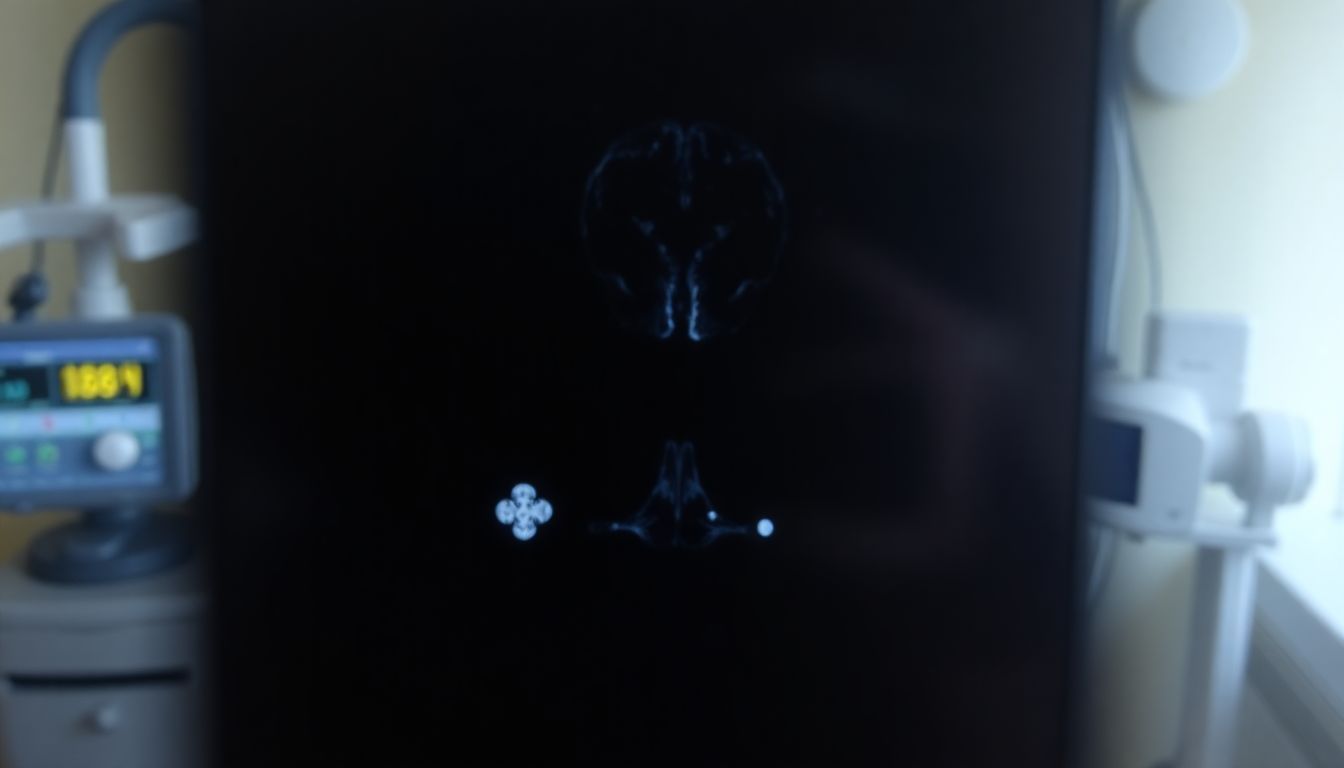Memory problems can sneak up on anyone, especially as we age. Silent strokes may be a hidden cause, quietly damaging the brain without obvious symptoms. This blog will explain how silent strokes affect memory and what you can do to protect your brain health.
Thank you for reading this post, don't forget to subscribe!Keep reading—it could change how you think about stroke prevention!
Key Takeaways
- Silent strokes are small, unnoticed brain injuries caused by blocked blood flow. About 10-20% of adults may have them without symptoms.
- These strokes damage the hippocampus and other memory-related areas, doubling dementia risk and harming thinking skills over time.
- High blood pressure, diabetes, and high cholesterol increase silent stroke risks. Managing these helps prevent further brain damage.
- MRI scans can detect silent strokes early, while cognitive tests like MoCA or MMSE check for memory issues tied to them.
- A healthy lifestyle with exercise, a balanced diet (like Mediterranean), and good sleep supports brain health and reduces stroke risks.
What is a Silent Stroke?
 Silent strokes happen without any obvious signs. Unlike major strokes, they don’t show clear symptoms like weakness or slurred speech. Many people don’t even know they’ve had one until damage shows up on a brain scan.
Silent strokes happen without any obvious signs. Unlike major strokes, they don’t show clear symptoms like weakness or slurred speech. Many people don’t even know they’ve had one until damage shows up on a brain scan.
These strokes occur when blood flow gets blocked in small blood vessels of the brain. This starves parts of the brain of oxygen, damaging tissue permanently. Studies reveal that about 10% of middle-aged adults with no stroke symptoms have suffered silent strokes, leaving hidden effects over time.
How Silent Strokes Impact the Brain
Silent strokes damage brain cells, which can weaken important connections in the mind. This harm may affect thinking skills and memory over time—especially in areas tied to problem-solving or recall.
Damage to brain tissue
Silent strokes starve parts of the brain by cutting off blood supply. This lack of oxygen kills brain cells and damages tissue. Over time, these injuries add up, weakening areas needed for memory and cognitive health.
Brain infarcts caused by silent strokes often go unnoticed but leave scars on vital regions. The hippocampus, key to forming memories, is especially at risk. With repeated damage, thinking skills decline, and dementia risks increase sharply.
Disruption of memory-related pathways
Damage from silent strokes can block blood vessels, cutting off oxygen to brain cells. This harms memory-related areas, such as the hippocampus. Even small strokes may interrupt pathways critical for storing and recalling memories.
Cumulative effects worsen over time. Brain infarcts linked to these strokes contribute to cognitive decline, vascular dementia, or Alzheimer’s disease. Studies show they disrupt signals between brain regions responsible for thinking skills and memory retention.
Silent strokes quietly steal pieces of your memory—piece by piece.
Silent Strokes and Memory Loss
Silent strokes can quietly harm parts of your brain linked to memory. These tiny, unnoticed strokes may lead to long-term cognitive problems over time.
Role of the hippocampus in memory
The hippocampus helps the brain store and recall memories. It is key for memory performance, especially in older adults. Studies show that a smaller hippocampal volume links to poorer memory skills, even in people without dementia.
This region also plays a part in recognizing familiar faces or places and learning new information.
Memory decline can happen when both the hippocampus and nearby brain areas experience damage. Silent strokes may reduce blood supply to this area, harming its ability to work well.
Over time, less activity in the hippocampus worsens cognitive impairment, including mild cognitive issues or vascular dementia. Protecting this region is vital for keeping your thinking skills sharp.
Link between brain infarcts and cognitive decline
Silent brain infarcts double the risk of dementia. Elderly people with these small strokes face a steeper cognitive decline than those without them. Brain infarcts disrupt blood flow, damaging key areas tied to memory and thinking skills.
Studies show those with silent thalamic infarcts often experience noticeable memory issues. The hippocampus—a key part of memory—can also be affected, worsening the problem.
People with multiple brain infarcts show severe cognitive decline over time. Memory loss becomes more obvious, along with difficulties in reasoning or focusing. MRI scans reveal such damage during follow-ups, highlighting how silent strokes harm cognition progressively.
Early detection is critical to address these risks before long-term effects worsen… now let’s explore signs of silent strokes next!
Signs of Silent Strokes
Silent strokes can quietly harm your brain without any obvious signs. Small changes, like struggling with focus or mental tasks, might hint at hidden damage happening deep inside.
Unexplained memory lapses
Unexplained memory lapses could signal silent strokes. These strokes damage small parts of the brain, often going unnoticed. Nearly 20% of all strokes are silent but can harm memory and thinking skills.
They disrupt pathways in the brain tied to recalling information and storing memories.
The hippocampus plays a key role in memory storage, and damage here worsens cognitive decline. People with vascular risk factors like high blood pressure or diabetes face higher chances of these issues.
If you find yourself forgetting simple things often or struggling to focus, it may be time to check for underlying causes like undetected brain infarcts.
Difficulty with concentration or problem-solving
Silent strokes can harm brain cells, making it harder to focus or solve problems. Damage to blood vessels reduces blood supply, affecting areas like the hippocampus. This disruption impacts thinking skills over time.
Studies show up to 25% of those over 80 experience silent strokes, increasing their risk of cognitive decline.
High blood pressure and high cholesterol add to this danger. These vascular risk factors hurt brain health if left unchecked. Early diagnosis through MRI scans helps identify silent strokes before concentration issues worsen.
Regular check-ups can catch warning signs early and lower stroke risks overall.
Diagnosing Silent Strokes
Doctors often use brain scans to spot silent strokes. Tests can also check how memory and thinking skills are working.
MRI scans for brain infarcts
MRI scans help find silent brain infarcts, which are small areas of damage caused by blocked blood flow. These scans use strong magnets to create detailed pictures of the brain. About 20% of stroke-free older adults have these infarcts without knowing it.
Studies show that having a silent brain infarct doubles the risk of a future stroke with an adjusted hazard ratio of 2.08. Identifying these on an MRI is crucial for assessing vascular risk factors, like high blood pressure or diabetes, and preventing further damage to brain tissue and memory-related pathways.
Neuropsychological assessments
Tests like the Mini-Mental State Examination (MMSE) and Montreal Cognitive Assessment (MoCA) help check memory and thinking skills. These tests often spot cognitive problems caused by brain infarcts or silent strokes.
The Addenbrooke’s Cognitive Examination Revised (ACE-R) digs deeper into memory loss.
Research aims to combine these evaluations for better detection of post-stroke issues, including mild cognitive impairment. Early identification can improve recovery plans after silent strokes.
Accurate testing helps target treatments for memory dysfunction—leading right into prevention methods that follow next.
Preventing Silent Strokes and Memory Loss
Taking care of your brain starts with managing health risks like blood pressure and cholesterol. Small changes in daily habits can protect memory and lower stroke chances.
Managing high blood pressure
High blood pressure can harm your brain and increase the risk of silent strokes. Regular monitoring helps catch and control it early. A healthy diet, like the DASH plan, lowers blood pressure by focusing on fruits, vegetables, whole grains, and low-salt meals.
Daily exercise is also key to managing hypertension. Activities like brisk walking or cycling for 30 minutes a day make a difference. Controlling weight reduces strain on the heart and vessels too.
Small lifestyle changes protect your brain from damage caused by high blood pressure over time.
Controlling diabetes and cholesterol
Diabetes harms blood vessels in the brain. It raises the risk of strokes, memory loss, and cognitive decline. Controlling blood sugar levels helps protect your brain cells and supports cognitive health.
Type 2 diabetes also leads to weight gain and mood changes, making it harder to stay healthy.
Cholesterol buildup blocks arteries and reduces blood flow to the brain. This can cause silent strokes or damage memory-related pathways like the hippocampus. Regular check-ups ensure cholesterol stays in check.
Eat a healthy diet low in saturated fats, exercise often, and take prescribed medications if needed for stroke prevention.
Adopting a brain-healthy lifestyle
Regular exercise boosts cognitive health and lowers dementia risk. Physical activities like walking or jogging promote better blood flow to the brain. This supports neuroplasticity, which helps your brain adapt and grow stronger over time.
Aim for at least 30 minutes of moderate exercise most days.
A balanced diet protects brain cells and improves memory. The Mediterranean Diet, rich in fruits, vegetables, whole grains, nuts, and olive oil, can reduce Alzheimer’s disease risk.
Sleep is just as vital—7-8 hours daily allows the brain to repair itself and store memories properly. Social connections also keep your mind sharp by lowering stress and improving mood.
MRI scans can reveal early warning signs linked with silent strokes…
Treating Memory Issues After Silent Strokes
Therapies and medications can help improve thinking skills after silent strokes—learn what options might work best.
Cognitive therapy
Cognitive therapy can help regain memory skills lost after silent strokes. It focuses on training the brain to work around damaged areas. This type of therapy may use exercises, tasks, and strategies to strengthen thinking and recall abilities.
Rehabilitation also helps improve daily life memory problems. While some brain damage from silent strokes cannot be reversed, other parts of the brain might take over certain functions.
Therapy boosts cognitive health by stimulating these areas, promoting gradual recovery for better mental sharpness.
Medications to support brain health
Cholinesterase inhibitors can help improve memory, thinking, and problem-solving. These drugs are often used for Alzheimer’s disease but may assist with mixed dementia caused by silent strokes.
They work by boosting certain brain chemicals linked to memory and judgment.
Some medications address cognitive decline after small strokes. These treatments aim to slow damage to brain cells and maintain cognitive health. Leading healthcare centers like Massachusetts General Hospital monitor such advancements closely.
Next: Could Fatigue and Nutrient Deficiency Be Affecting Your Brain Health?
Could Fatigue and Nutrient Deficiency Be Affecting Your Brain Health?
Fatigue and poor nutrition can harm your brain. Low levels of vitamin D, B-12, or iron may cause brain fog or memory issues. Omega-3 fatty acids are key for cognitive health, but many diets lack enough of them.
Magnesium supports clear thinking too—without it, concentration worsens. Chronic inflammation in the brain from nutrient gaps may also lead to sluggish memory and slower problem-solving.
Undereating can worsen these problems. It deprives the body of essential nutrients needed for energy and focus. People with low choline levels might struggle with mental clarity over time since this nutrient protects memory pathways.
Poor eating habits often pair with fatigue, increasing risks for depression or anxiety that hurt cognitive function further.
Conclusion
Silent strokes can quietly damage the brain and steal memories. They often go unnoticed but have serious effects on cognitive health. Protecting your brain means managing risk factors like high blood pressure, diabetes, and cholesterol.
A healthy lifestyle can lower the chance of silent strokes and memory loss. Take small steps today to care for your mind and body—it matters more than you think!
References
- https://www.webmd.com/stroke/silent-stroke-you-need-to-know (2024-02-29)
- https://www.health.harvard.edu/blog/silent-strokes-can-jeopardize-memory-201206044846
- https://pmc.ncbi.nlm.nih.gov/articles/PMC3466498/
- https://pubmed.ncbi.nlm.nih.gov/22201111/
- https://pubmed.ncbi.nlm.nih.gov/12660385/
- https://www.health.harvard.edu/mind-and-mood/could-a-silent-stroke-erode-your-memory
- https://pmc.ncbi.nlm.nih.gov/articles/PMC10718363/
- https://pmc.ncbi.nlm.nih.gov/articles/PMC4766016/
- https://pmc.ncbi.nlm.nih.gov/articles/PMC7925615/
- https://pmc.ncbi.nlm.nih.gov/articles/PMC4164290/
- https://www.health.harvard.edu/heart-health/blood-pressure-and-your-brain (2022-06-30)
- https://pmc.ncbi.nlm.nih.gov/articles/PMC6787147/
- https://pmc.ncbi.nlm.nih.gov/articles/PMC6457594/
- https://www.healthline.com/nutrition/can-not-enough-nutrients-cause-brain-fog (2022-06-13)
